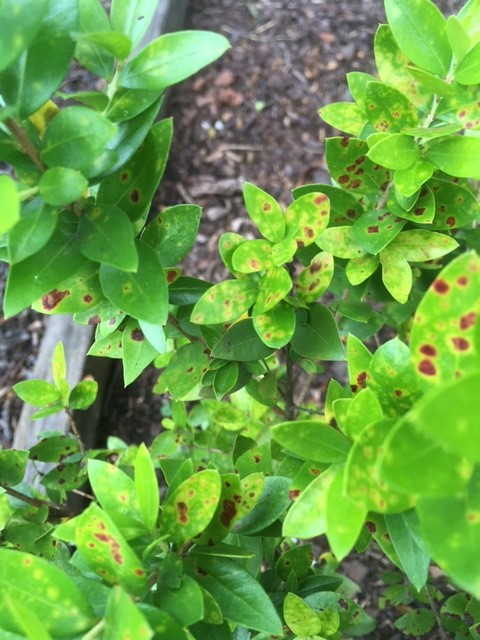 With Sukkot on the horizon, one of my rabbinic tasks was making sure that the Young Israel of Memphis’s aravot (willow) and hadassim (myrtle) gardens were getting all the TLC they need.
With Sukkot on the horizon, one of my rabbinic tasks was making sure that the Young Israel of Memphis’s aravot (willow) and hadassim (myrtle) gardens were getting all the TLC they need.
This year my concern grew after my wife, Layala, pointed out that while our aravot were thriving, many of the leaves of our fledgling hadassim bushes developed strange brown spots. Based on conversations she had with a gardener, she feared this may be signs of a fungal infection.
Upon hearing this, I took pictures of the hadassim leaves and hastily emailed them to Rick Pudwell –Director of Horticulture at the Memphis Botanic Garden. I described to how YI’s children and I planted these Israeli hadassim saplings together, how they’ve been cared for, and how they’re developing. I’ve reached out to Rick in the past, and I figured he would be the perfect person to ask what was causing these spots, and if there was a way to treat them.
Rick quickly replied to my inquiry as follows:
“Hello Rabbi Males, I think you are correct – the spots probably are fungal in nature. I am sure it is due to our hot and humid summer. I doubt that the humidity is as high in Israel. I would try treating them with a rose fungicide. If you go to the Dan West Garden Center on Poplar, I am sure Kenneth could suggest one that might work… Remember once leaf tissue is damaged for any reason, the individual leaves do not recover, but new foliage should be good after you spray. Follow package directions, but you will need to spray at regular intervals throughout the growing season. Next year be sure to start spraying in the spring, before initial damage occurs. Hope you have a great week.”
Fungus caused by humid conditions? Sounds to me like our local expert is telling us Young Israel’s hadassim have come down with a bad case of athlete’s foot! Amazing! Although I haven’t yet had a chance to follow up on Rick’s suggestions for treating the fungus afflicting YI’s hadassim, I hope to do so in the near future.
In the meantime, my correspondence with the Memphis Botanical Garden’s Director of Horticulture reminded me of something we all know, but don’t think about as often as we should. Rick pointed out that YI’s hadassim caught this fungus as a result of Memphis being far more humid than Israel — the natural habitat for hadassim. We’re trying to grow YI’s hadassim outside of the locale where G-d intended them to grow and enhance our celebration of Sukkot.
Yes, Jews are obligated to observe the Torah and its mitzvot (commandments) in their entirety — no matter where in the world we find ourselves. Nonetheless, it’s important to remember that Israel is truly where G-d intended His people to live — and the locale for which the Torah and mitzvot were designed.
(I recall having similar thoughts as a child while shivering in my maternal grandparents’ frigid Sukkah in Montreal, Canada. “Isn’t Sukkot supposed to occur before the winter?” I remember articulating this idea when Layala and I were newly married and spending Pesach with my parents in Cleveland, Ohio — where the power went out on yom tov due to a spring blizzard that brought down many tree limbs and power lines. “Isn’t Pesach supposed to be celebrated in the spring?” With Young Israel of Memphis’ fungus-stricken hadassim bushes, this realization hits me yet again!)
Let’s fully celebrate the upcoming Yom Tov in as beautiful a manner as possible here in Memphis, TN and around the world. However, let’s do our best to remember that the ultimate place where we’re meant to enjoy — and grow — our yomim tovim is in the land of Israel. This is what I’ll be thinking on Simchat Torah as we joyously sing L’Shanah Haba’ah B’Yerushalayim HaBenuyah (Next year in a rebuilt Jerusalem)!
Young Israel of Memphis’ Rabbi Akiva Males can be reached at rabbi@yiom.org
The words of this author reflect his/her own opinions and do not necessarily represent the official position of the Orthodox Union.

